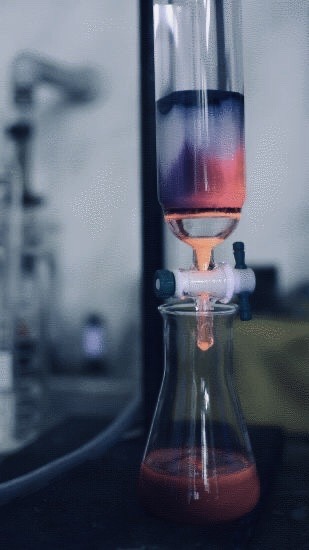Mikrobiotch - 🔬🧪🧫🧬





More Posts from Mikrobiotch and Others


(via Nikon Small World 2023 photo microscopy contest: Meet this year’s top 20 winners | Ars Technica)
Second place: a matchstick igniting by the friction surface of a matchbox.
Sunflower pollen on an acupuncture needle.

There are few places on Earth as isolated as Trindade island, a volcanic outcrop a three- to four-day boat trip off the coast of Brazil.
So geologist Fernanda Avelar Santos was startled to find an unsettling sign of human impact on the otherwise untouched landscape: rocks formed from the glut of plastic pollution floating in the ocean.
Santos first found the plastic rocks in 2019, when she traveled to the island to research her doctoral thesis on a completely different topic—landslides, erosion and other “geological risks.”
She was working near a protected nature reserve known as Turtle Beach, the world’s largest breeding ground for the endangered green turtle, when she came across a large outcrop of the peculiar-looking blue-green rocks.
Intrigued, she took some back to her lab after her two-month expedition.
Analyzing them, she and her team identified the specimens as a new kind of geological formation, merging the materials and processes the Earth has used to form rocks for billions of years with a new ingredient: plastic trash.
Continue Reading





gifts for microbio and paleo enthusiasts! :DD



A quick little note about this bacterium, Nocardia! These are fascinating to me as, although they are a rod-shaped bacteria, they can form beaded, perpendicularly branching filaments that are acid-fast. They can appear morphologically similar to a different bacteria, the anaerobic Actinomyces, however Actinomyces does not exhibit beading like Nocardia does.
This is a Gram-stain of a bacterial embolus within a pulmonary vessel of an Australian marsupial species, and we were lucky enough to know what genus we were dealing with before culture was performed, purely based on the bacteria's morphology!
Question from one of my Mycograsshoppers on Patreon: “what types of potential pests might be attracted to the [mushroom] spores?”
My answer: “Good question mycograsshopper! Primarily fungal gnats :) thats my biggest concern. Technically mites, but thats less common, and also technically, I believe, a few choice flies and some beetles could be attracted if you kept your research area wide open to the outside long enough!!! Any creature that youd consider a pest for your mushrooms is termed “fungivore” and includes mycelium, spore, and fruit body-hunting pests💯”






lil chemistry moodboard for motivation 🧪🥼
-
 nguyenkhoi liked this · 1 year ago
nguyenkhoi liked this · 1 year ago -
 fivepebbles liked this · 1 year ago
fivepebbles liked this · 1 year ago -
 ccosmicentity liked this · 1 year ago
ccosmicentity liked this · 1 year ago -
 sulfur1c-4cid reblogged this · 1 year ago
sulfur1c-4cid reblogged this · 1 year ago -
 ratvich reblogged this · 1 year ago
ratvich reblogged this · 1 year ago -
 ratvich liked this · 1 year ago
ratvich liked this · 1 year ago -
 roundearthsociety reblogged this · 1 year ago
roundearthsociety reblogged this · 1 year ago -
 roundearthsociety liked this · 1 year ago
roundearthsociety liked this · 1 year ago -
 truesonsofthelivingword reblogged this · 1 year ago
truesonsofthelivingword reblogged this · 1 year ago -
 enthusispastic liked this · 1 year ago
enthusispastic liked this · 1 year ago -
 celestialstache reblogged this · 1 year ago
celestialstache reblogged this · 1 year ago -
 celestialstache liked this · 1 year ago
celestialstache liked this · 1 year ago -
 kinglizardpunkernickel liked this · 1 year ago
kinglizardpunkernickel liked this · 1 year ago -
 rayzaranza liked this · 1 year ago
rayzaranza liked this · 1 year ago -
 death-to-the-daleks liked this · 1 year ago
death-to-the-daleks liked this · 1 year ago -
 senor-frank-024 liked this · 2 years ago
senor-frank-024 liked this · 2 years ago -
 mikrobiotch reblogged this · 2 years ago
mikrobiotch reblogged this · 2 years ago -
 v-a-t-i-o reblogged this · 2 years ago
v-a-t-i-o reblogged this · 2 years ago -
 v-a-t-i-o liked this · 2 years ago
v-a-t-i-o liked this · 2 years ago -
 my-taste-in-music liked this · 2 years ago
my-taste-in-music liked this · 2 years ago -
 sneefsnorf reblogged this · 2 years ago
sneefsnorf reblogged this · 2 years ago -
 elknin liked this · 2 years ago
elknin liked this · 2 years ago -
 theearnestonion liked this · 2 years ago
theearnestonion liked this · 2 years ago -
 maple-bow reblogged this · 2 years ago
maple-bow reblogged this · 2 years ago -
 maple-bow liked this · 2 years ago
maple-bow liked this · 2 years ago -
 lordansketil liked this · 2 years ago
lordansketil liked this · 2 years ago -
 itslookingback reblogged this · 2 years ago
itslookingback reblogged this · 2 years ago -
 itslookingback liked this · 2 years ago
itslookingback liked this · 2 years ago -
 scalemodelarbysreplica liked this · 2 years ago
scalemodelarbysreplica liked this · 2 years ago -
 m-e-w-666 reblogged this · 2 years ago
m-e-w-666 reblogged this · 2 years ago




